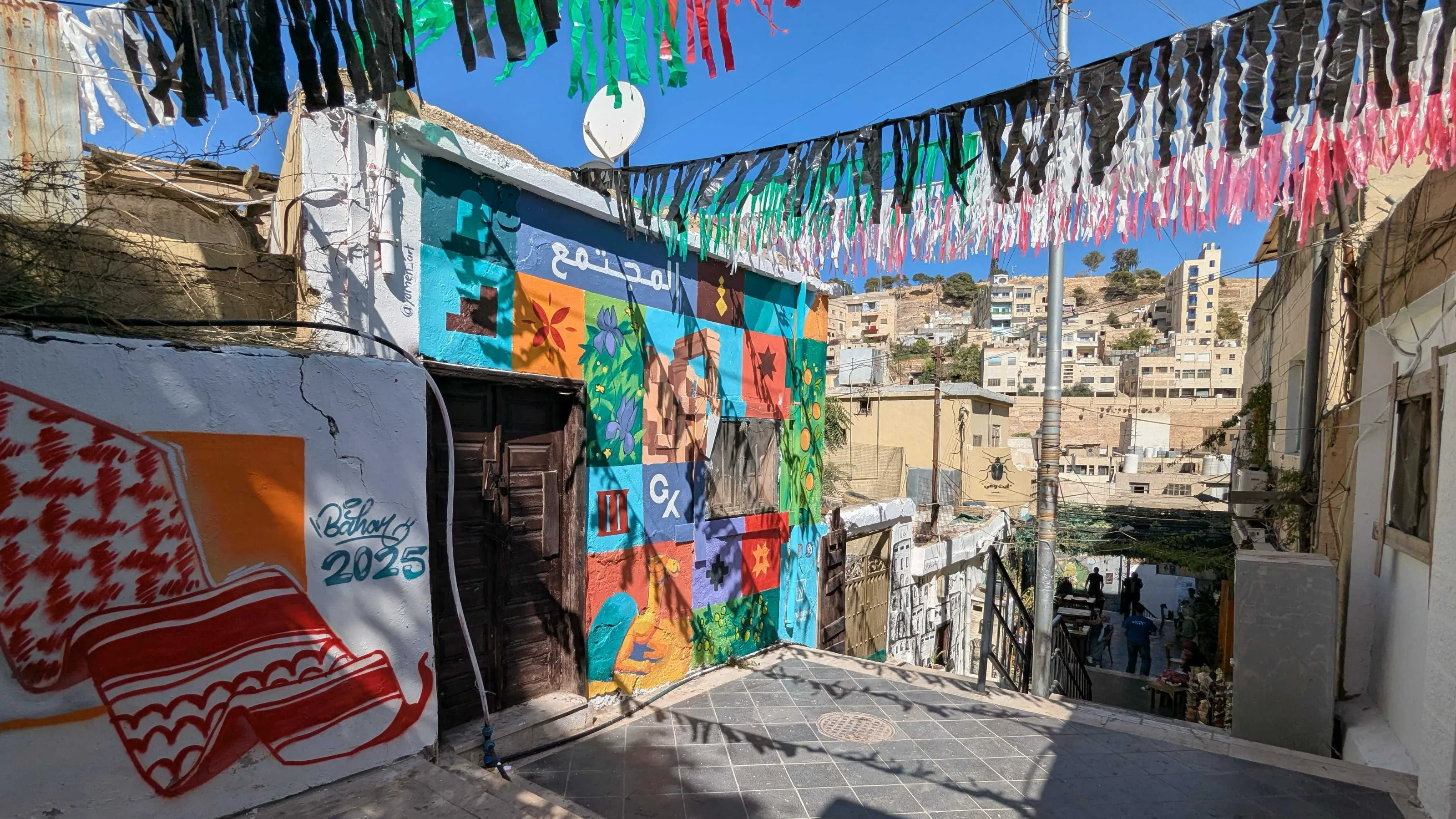Not just jollof: 13 must-try Ghanaian foods
From renowned staples like fufu to regional specialities like tuo zaafi, here's how to get your hands on tasty Ghanaian eats

Ghana’s historic diversity of ethnic groups plays a huge role in the Ghanaian food of today, making it well worth exploring through travel. Traditional Ghanaian food has a few key ingredients, typically starches like yam and cassava, that pop up in several ways. These starches often take the form of swallows (a soft starchy dough eaten with your hands) commonly served with hearty stews or lighter soups. When brought together, you end up with belly-filling meals packed with punchy flavours and snacks that keep you coming back. So grab your nearest bowl and get your fingers ready for 13 foods from Ghana to try on our travels.
Jollof rice: West Africa’s favourite
Let’s talk about jollof rice! Variations of the dish spread across West Africa, with every nation claiming to have the best version. While that is ultimately down to personal tastes, one thing we can confirm is that Ghanaian jollof rice is always a part of that conversation. At almost any occasion, celebration, or party in Ghana, jollof rice is on the table.
The iconic one-pot rice dish starts with tomatoes, garlic, ginger, onion, and chili. This is blended or cooked down into a sauce that cooks the rice. Spices are added and vary depending on the cook, but the result is a rich, spicy rice dish enjoyed alone or as part of a bigger meal.

Taste it for yourself on: West African Adventure: Highlights of Ghana, Togo, & Benin
Fufu: A Ghanaian staple
On the topic of staple foods, next up we have fufu. This starchy dough falls into the category of swallows and is found alongside many meals. The texture is sticky to the touch and it’s used as a vessel to your mouth for stews and soups. You won’t have to look hard to find it in Ghana, but it’s one that deserves respect.
Despite its humble appearance and status as a side, a lot of labour goes into fufu’s preparation. Made from cassava, and sometimes mixed with plantain or other root vegetables, the dough is formed by boiling root vegetables and pounding them with a pestle and mortar. Water is gradually added and between blows from the pestle, the mixture is hand-turned. When the desired texture is reached, the dough is shaped and portioned out.

Okra soup: A textural adventure
As mentioned, soups and stews often take the lead in Ghanaian food and okra soup is no exception. The primary ingredient is (spoiler alert!) okra, sometimes known as lady’s fingers, a green vegetable with a unique viscous texture when cooked. The soup is traditionally made with beef and fish but sometimes includes shellfish, leafy greens, or poultry. Regardless of the variant, the ingredients are combined and spiced to create a hearty meal that you will crave again. If paired with fufu or another swallow, just prepare for a little nap.

Taste it for yourself on: Ghana: Beaches & Breathtaking Coastlines
Shito: Hot pepper sauce
The word shito comes from the Ga language and literally translates to ‘pepper’. In the context of Ghana (and widely West Africa) pepper is used to refer to chilis and spice. Shito is served all over Ghana and even sold in markets and shops. However, the shito you are served is more than just chili thankfully. It’s a powerful hot pepper sauce made using dried fish, prawns, onion, garlic, spices and of course chili. There are different levels of spice to shito, but it’s the condiment of choice for almost any dish in Ghana.

Waakye: Rice and beans
A combination of rice and beans is found around the world, but there is only one waakye. It’s a simple dish blending rice, beans, and waakye leaf (the leaf of a millet stalk). The leaf gives it a distinct colour and flavour, but it isn’t an overpowering one. Waakye is a versatile side that can be paired with almost everything including eggs, fish, and meat. It’s universally popular and you can often find it as a takeaway meal wrapped in a banana leaf.

Taste it for yourself on: Complete Ghana: The Beauty of Travelling West Africa
Kenkey: Fermented maize dumplings
Here we have another swallow with a bit of a twist as kenkey is unique in its preparation. Using a fermented starch as its base means it takes a little bit of planning to prepare. Fermented maize is wrapped and boiled resulting in a dumpling with an almost sourdough-like flavour. It’s typically served with fish given Ghana’s coastal seafood bounty, or meat paired with sauces like shito.

Ghanaian bean stew (red red): A comforting classic
You can’t go to Ghana and not try Ghanaian bean stew. Often referred to as ‘red red’, it’s a heartwarming and extremely popular dish — especially when paired with gari (a powder made from cassava root). This stew gets its name from the black-eyed beans turning red when cooked in palm oil. It can be a meal on its own or served with side dishes like kelewele, eggs, or some variation of rice. For vegans or vegetarians, this one’s for you as no matter where you are in Ghana you can find it.

Taste it for yourself on: Ghana Classic Adventure: Cultural Festivals & National Parks
Kelewele: Spiced fried plantains
A snack, a side dish, or more, kelewele is whatever you want it to be. As with a lot of Ghanaian food, simplicity goes a long way when done right. Kelewele is fundamentally a pretty basic dish of fried plantains. What makes it so iconic isn’t something revolutionary like a special frying technique, it's the humble mix of spices seasoning the plantain before frying. This elevates the fried plantain into something luxurious without much extra effort.

Tuo Zaafi: A signature of Northern Ghana
This swallow might not be everywhere, but if you do come across tuo zaafi you’re in for a treat. Also known as ‘TZ’, it’s most commonly found in Northern Ghana and made from maize or millet flour cooked into a smooth, thick porridge. Similar in texture when fully cooked to fufu, it’s slightly softer and its more muted flavour pairs well with a variety of soups and stews.

Taste it for yourself on: West African Adventure: Highlights of Ghana, Togo, & Benin
Nkatie: Peanut or groundnut brittle
This might be the first sweet entry on the list but don’t sleep on nkatie. It comes in many shapes but it’s most comparable to peanut brittle. Made using peanuts or groundnuts coated in caramelized sugar, it’s loved by children and adults alike and commonly sold by street vendors.
Bofrot: The all-day breakfast donut
There's no way we could leave bofrot off this list. It’s a donut made from flour, sugar, yeast, and a hint of nutmeg. Sold all over Ghana as a popular snack, it’s also a breakfast staple. Who doesn’t want donuts for breakfast? Be warned, they are addictive and you will eat more than one.

Taste it for yourself on: Ghana, Togo, & Benin: Castles, Coastlines and Voodoo Discoveries
Etor (Oto): A festive plantain or yam mash
You’ll find etor or oto served at special occasions ranging from naming ceremonies, to birthdays, to weddings. Depending on the specific event the dish can be made from a different starch — either plantain or yam. It’s mashed and mixed with palm oil then garnished with peanuts and boiled eggs. While not as easy to try as other dishes throughout your travels, it’s an example of how similar ingredients in Ghanaian food can translate into a wide range of dishes.
Wasawasa: A unique take on yam
Last but not least, you should try wasawasa. Its closest food relative is couscous but even that doesn’t fully capture its essence. Another dish from Northern Ghana, wasawasa is made from dried yam peelings ground into flour. The flour is steamed to create a dish with a couscous-like texture that’s typically served with a spicy pepper sauce and fried fish.




























































































:format(webp)/cdn.vox-cdn.com/uploads/chorus_image/image/66321622/1206682849.jpg.0.jpg)

























:format(webp)/cdn.vox-cdn.com/uploads/chorus_image/image/67131045/1261725039.jpg.0.jpg)





































/origin-imgresizer.eurosport.com/2024/02/04/3880159-78836108-2560-1440.jpg)






















